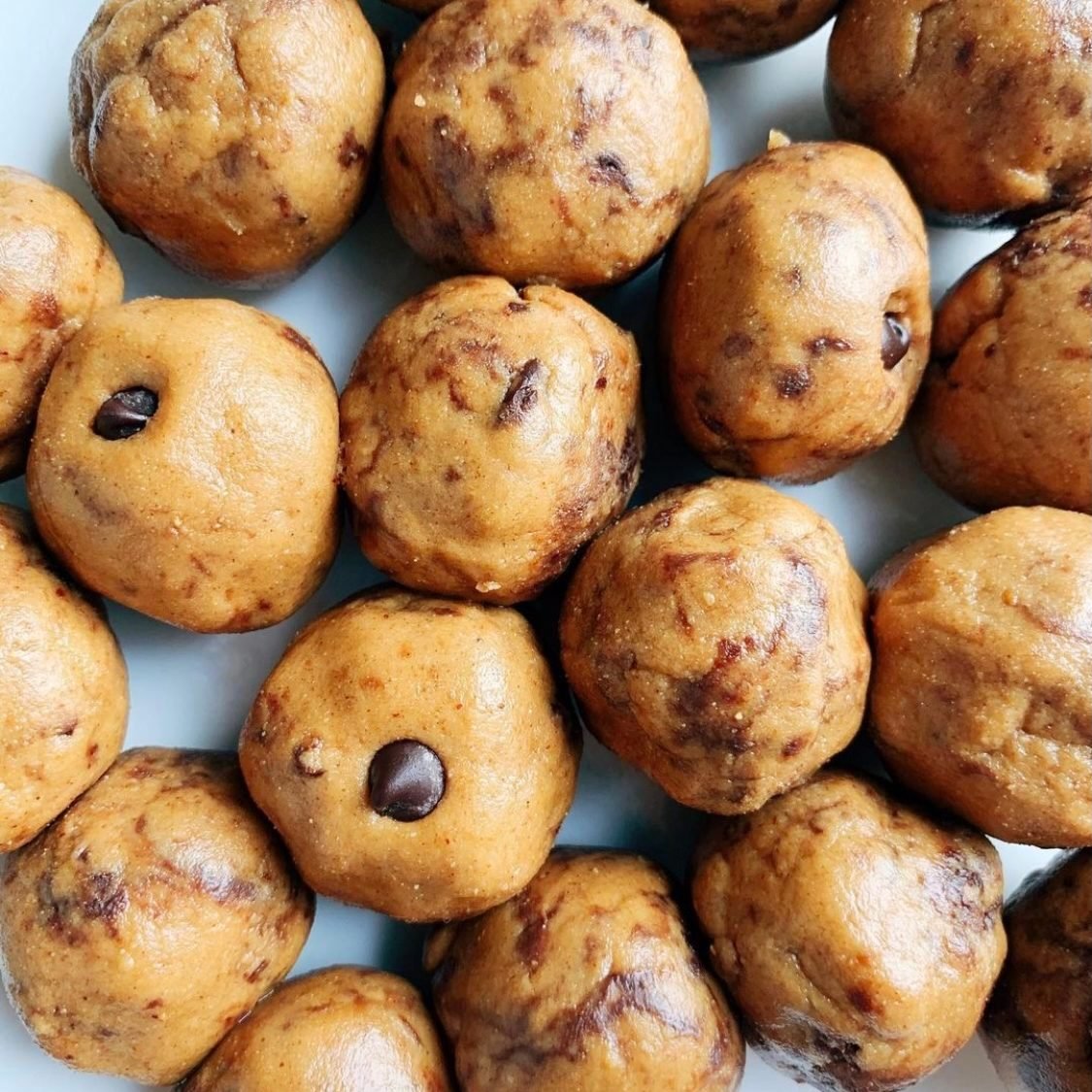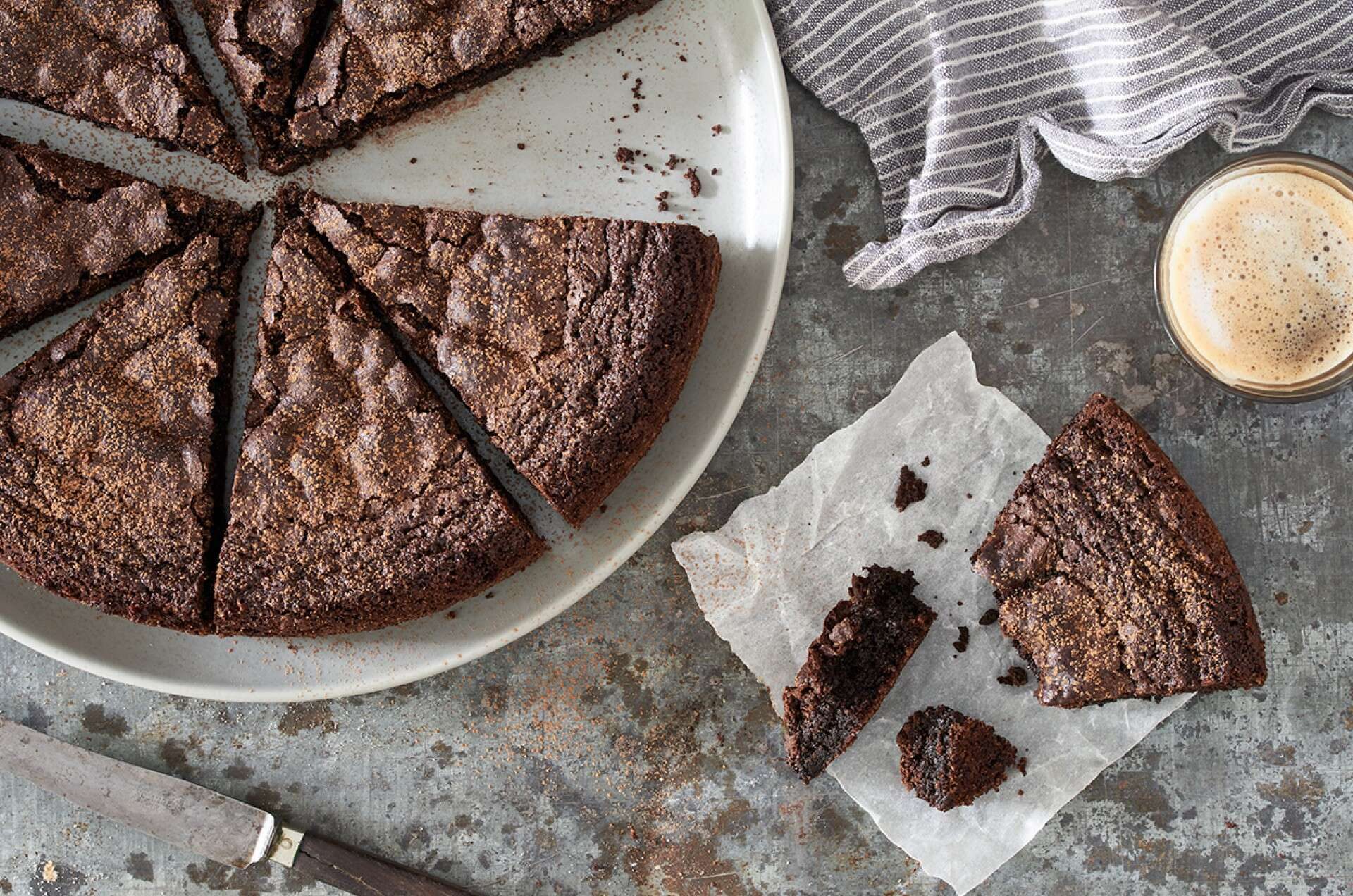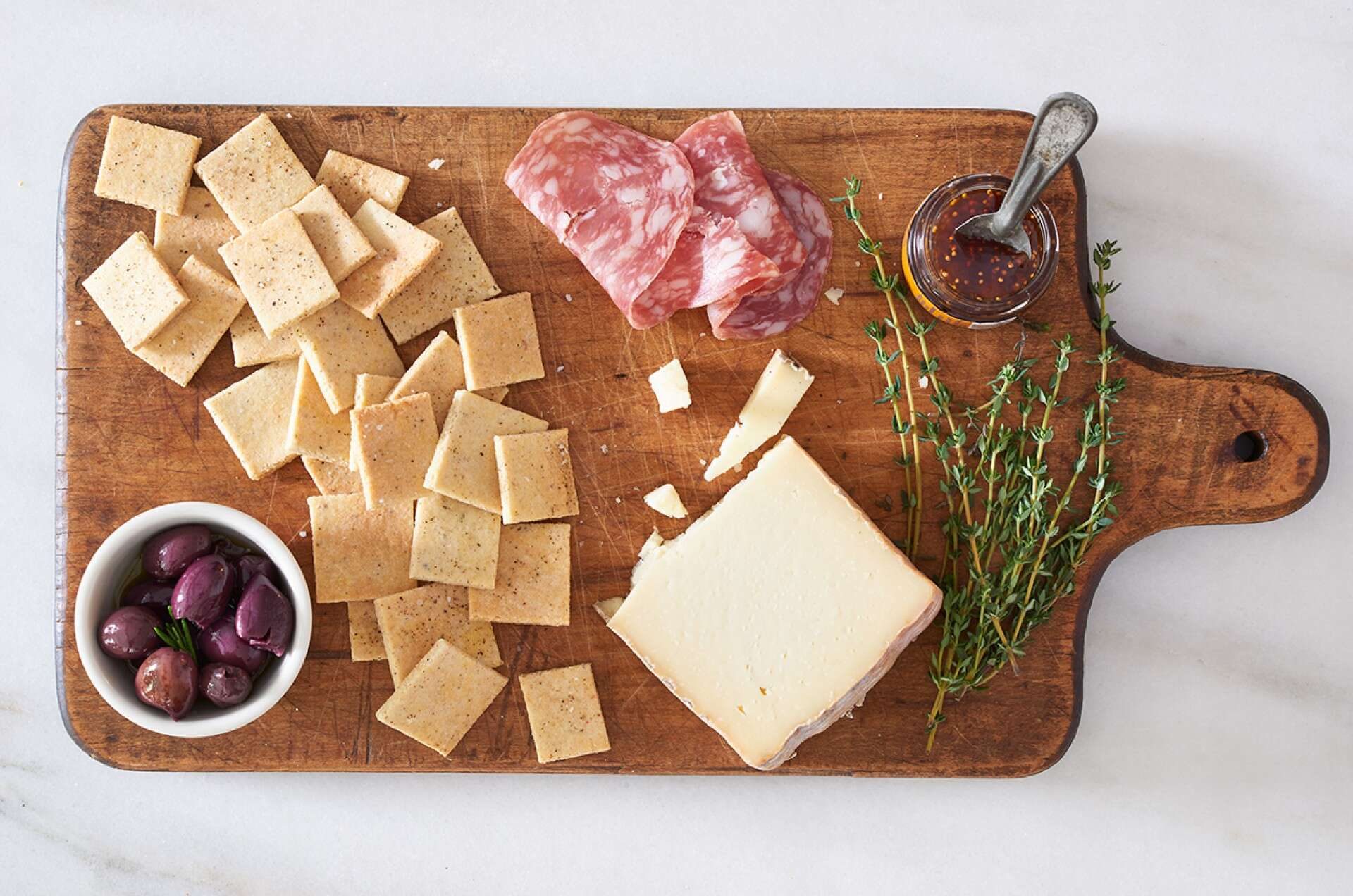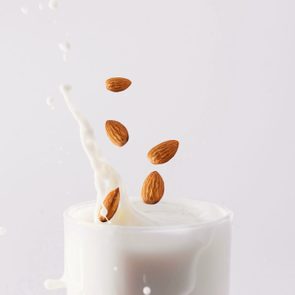5 Delicious Almond Flour Recipes
Updated: Mar. 28, 2022
Registered dietitian Vanessa Rissetto shares some of her favorite recipes featuring almond flour.
It’s almond time
The mighty almond is lending itself to practically everything these days: almond milk, almond butter, almond beer. Now, almond flour—a grain-free alternative to regular flour—is making its way into recipes, both sweet and savory. It’s perfect for gluten-free, grain-free, paleo, or keto households, and stands up pretty well to traditional all-purpose flour.
Almond flour is exactly what it sounds like—flour, made from almonds. Almond flour recipes exist for pancakes, muffins, cakes, cookies, pizza, breaded chicken or fish, even meatballs. While it doesn’t have a particularly distinct taste, it does offer similar textural qualities as many other flour varieties. It thickens, binds, and helps baked goods rise, according to the International Journal of Food Science + Technology.
Almond flour nutrition
The most common question about almond flour nutrition: Is it healthier than regular flour or whole wheat flour? The answer depends on your individual dietary needs and health goals, but here are the facts.
Compared to regular flour, almond flour is higher in calories, protein and fat, and significantly lower in carbs. According to the U.S. Department of Agriculture (USDA):
A cup of almond flour (about 100 grams) has 607 calories, 21 grams of protein, 21 grams of carbohydrates, and 54 grams of fat.
One cup of regular all-purpose flour has 367 calories, 10 grams of protein, 77 grams of carbohydrates, and no fat.
When it comes to fiber, almond flour wins. It has about 10 grams of fiber per cup, while all-purpose flour has about 3 grams. Both flours contain about 20 percent of the daily recommended amount of iron in a one-cup serving, per the USDA.
If you’re paleo, grain-free, or in the market for a lower-carb, higher-fat flour product, almond flour is for you. Just be careful when substituting—almond flour bakes a bit differently than all-purpose flour. Although the substitution ratio is one to one, you may need to add additional binding agents (think: eggs, flax eggs—a mixture of flaxseed meal and water that mimics an egg in baking—or oil) to the recipe.
How to make your own almond flour
Making almond flour at home is a fairly painless process. Just throw a bunch of almonds into a blender (slivered or chopped almonds work best), and blend away until they are finely ground flour. Careful not to over-blend, or you’ll be making almond butter instead.
Basic Almond Flour
Makes about 1 1/2 cups fine almond flour
Ingredients:
1 1/2 cups slivered almonds
Instructions:
Blend almonds in a high-speed blender (we love Vitamix or Ninja blenders—they can blend the almonds super fine) for about 10 to 15 seconds. Stop blending, and use a spoon to scrape down the edges. Blend once more for 10 to 15 seconds. Store in an airtight glass container for up to eight weeks in a cool, dark place.
Chocolate Chip Peanut Butter Energy Balls

One of my favorite almond flour recipes is for these energy balls. Whether you need a small but significant pre-workout snack, a little something to get you through Zoom meetings, or something to cure that 4:00 pm sweet tooth, these are the perfect option.
The peanut butter adds protein and satiating fats, to give them staying power. And the honey and dark chocolate chips provide carbs and the perfect amount of sweetness to this almond flour recipe.
Makes about 12 energy balls
Ingredients:
1 cup natural peanut butter
1/4 cup honey
1/2 cup almond flour
2 tablespoons mini dark chocolate chips
Instructions:
In a bowl, mix to combine peanut butter and honey. (If the mixture is difficult to stir, it may help to microwave it for 20 seconds, then stir.) Add almond flour, and stir to combine. Add chocolate chips, and stir to combine.
Using a melon baller or small ice cream scoop, scoop out two tablespoons of the mixture at a time. Roll between palms to form a ball.
Store energy balls in an airtight container in the refrigerator for up to three weeks.
Paleo-Friendly Chicken Parmesan
You can be paleo and still love a nice plate of chicken parm, right? This dish hits all the same notes as classic chicken parmesan—savory, crunchy, and full of flavor. We just took out the grains and gluten and made almond flour the star of the show.
Ingredients:
2 large chicken breasts
1/4 cup almond flour
2 tablespoons grated parmesan cheese
1 tablespoon garlic powder
Dash of salt and pepper
1 egg
2 tablespoons water
1/4 cup marinara sauce
2 ounces whole-milk mozzarella cheese, sliced
Instructions:
Preheat oven to 375 degrees F. Using a sharp knife, butterfly the chicken breasts: Cut along one side horizontally, until you almost get to the other side and can open the chicken breast like a book.
Lay the butterflied chicken breasts out on a cutting board, and place plastic wrap over them. Using a meat mallet (or the back of a frying pan), pound the breasts to tenderize for about 15 to 20 seconds.
In a shallow bowl, combine almond flour, parmesan cheese, garlic powder, salt, and pepper.
In a second shallow bowl, crack the egg, add 2 tablespoons of water, and whisk.
Dip the butterflied chicken breasts into the egg mixture to fully coat, then in the flour mixture to fully bread. Shake off any excess.
Place chicken breasts on the baking sheet, and bake for 15 minutes. Remove from oven. Flip breasts over. Divide marinara sauce between each breast, spreading on top. Then divide mozzarella cheese between each breast, laying on top.
Return chicken to the oven, and bake for an additional 5 to 7 minutes, until the cheese fully melts.
Almond Flour Banana Pancakes
Who can say no to pancakes? They are one of the most versatile and customizable dishes around. They can be sweet or savory, big or small, paleo or full of gluten. These almond flour banana pancakes just scream Sunday morning.
With protein and healthy fats from the almond flour, and complex carbs from the overripe banana, these pancakes are dietitian-approved. You can even add some collagen or protein powder for an extra protein boost.
Makes 12 medium-sized pancakes
Ingredients:
2 ripe bananas, mashed (the riper, the better)
2 eggs
1 teaspoon vanilla extract
1 1/4 cups almond flour
2 teaspoons ground cinnamon
1 teaspoon baking powder
Dash of salt
Non-stick cooking spray
Dash of almond milk (as needed)
Optional: 1 scoop vanilla protein powder or 3-4 scoops collagen peptides
Instructions:
Using a fork, mash the bananas. Add to mixing bowl with 2 eggs and vanilla extract. Whisk thoroughly.
Add all dry ingredients to the bowl, mix thoroughly.
Set a skillet or griddle over medium-low heat. Spray with non-stick cooking spray, and add dollops of pancake batter (2-3 tablespoons each), leaving space in between.
Let pancakes cook until bubbles begin to form around the edges. Then use a spatula to flip, and cook for an additional 2 minutes.
Serve with butter and maple syrup, and enjoy!
King Arthur Almond Flour Brownies

A sweet, chocolatey, grain-free dessert? Sign us up! These brownies are so decadent that no one would ever know they’re grain-free. Share these with your grain-free friends, or slice them and store them in the freezer for future brownie emergencies.
Makes 12-16 brownies
Ingredients:
5 tablespoons butter, melted
1 3/4 cups sugar
1/2 teaspoon salt
1 teaspoon vanilla extract
3/4 cup unsweetened cocoa
3 large eggs
1 1/2 cups almond flour
1 teaspoon baking powder
Instructions:
Preheat oven to 350 degrees F. Grease an 8-inch square pan or 9-inch round pan.
In a medium-sized bowl, stir together melted butter, sugar, salt, vanilla extract, cocoa, and eggs. Stir in the almond flour and baking powder.
Pour batter into a baking dish, spreading it to the edges.
Bake for 33 to 38 minutes, until the top is set, and a toothpick inserted in the center comes out nearly clean.
Remove brownies from oven and allow to cool for at least 15 minutes before cutting. Store at room temperature for up to five days, or in the freezer for up to eight weeks.
King Arthur Gluten-Free Almond Flour Crackers

It’s obvious that almond flour works well in sweet dishes, but what about savory? There are actually plenty of almond flour recipes like this one that use the flour differently. Prepare to kick your charcuterie board game up 10 notches.
These gluten-free crackers are beyond delicious, and super easy to make. What’s more, they contain minimal ingredients, making them a much healthier option than many of the sodium– and chemical-laden options on grocery store shelves. Plus, you can tell everyone at the holiday party that you made them yourself with a simple almond flour recipe.
Makes about 10 dozen one-inch-square crackers
Ingredients:
1 large egg
1/4 teaspoon salt
1/2 teaspoon black pepper
1 3/4 cups almond flour
Optional add-ins:
For cheese flavor: 1/4 teaspoon mustard powder, a dash of Tabasco, 1 cup finely grated cheese
For seedy crackers: 1-2 tablespoons sesame seeds, poppy seeds, or blend of your choice
For cinnamon-sugar crackers: Omit black pepper and add 2 teaspoons cinnamon sugar over tops of the crackers before baking.
Instructions:
Preheat oven to 350 degrees F.
Whisk together the egg, salt, pepper, and any additional spices or add-ins. Add the almond flour, and stir to make a cohesive dough.
Place the dough onto a sheet of parchment paper. Pat it out with your hands, and top with an additional piece of parchment or plastic wrap. Roll the dough to about 1/8-inch thickness; it should be about 10 inches x 12 inches, or larger.
Remove the top paper, and use a pizza wheel or knife to cut one-inch squares. Move the cut crackers, along with parchment paper, to the baking sheet.
Bake the crackers until they are light golden brown (about 14 to 16 minutes). The crackers around the perimeter will tend to brown more quickly. So transfer those to a cooling rack and return the pan to the oven to finish baking the remaining crackers in the center.
Cool the crackers completely before transferring them to an airtight bag for room-temperature storage.
Bottom line
When it comes to cooking or baking with almond flour, we’re all about it. It’s higher in protein and fat than all-purpose flour and contains about half the carbs. That means it’s slower digesting, and a bit more satiating.
If you’re looking to try eating gluten-free or grain-free, almond flour recipes are a great place to start.























